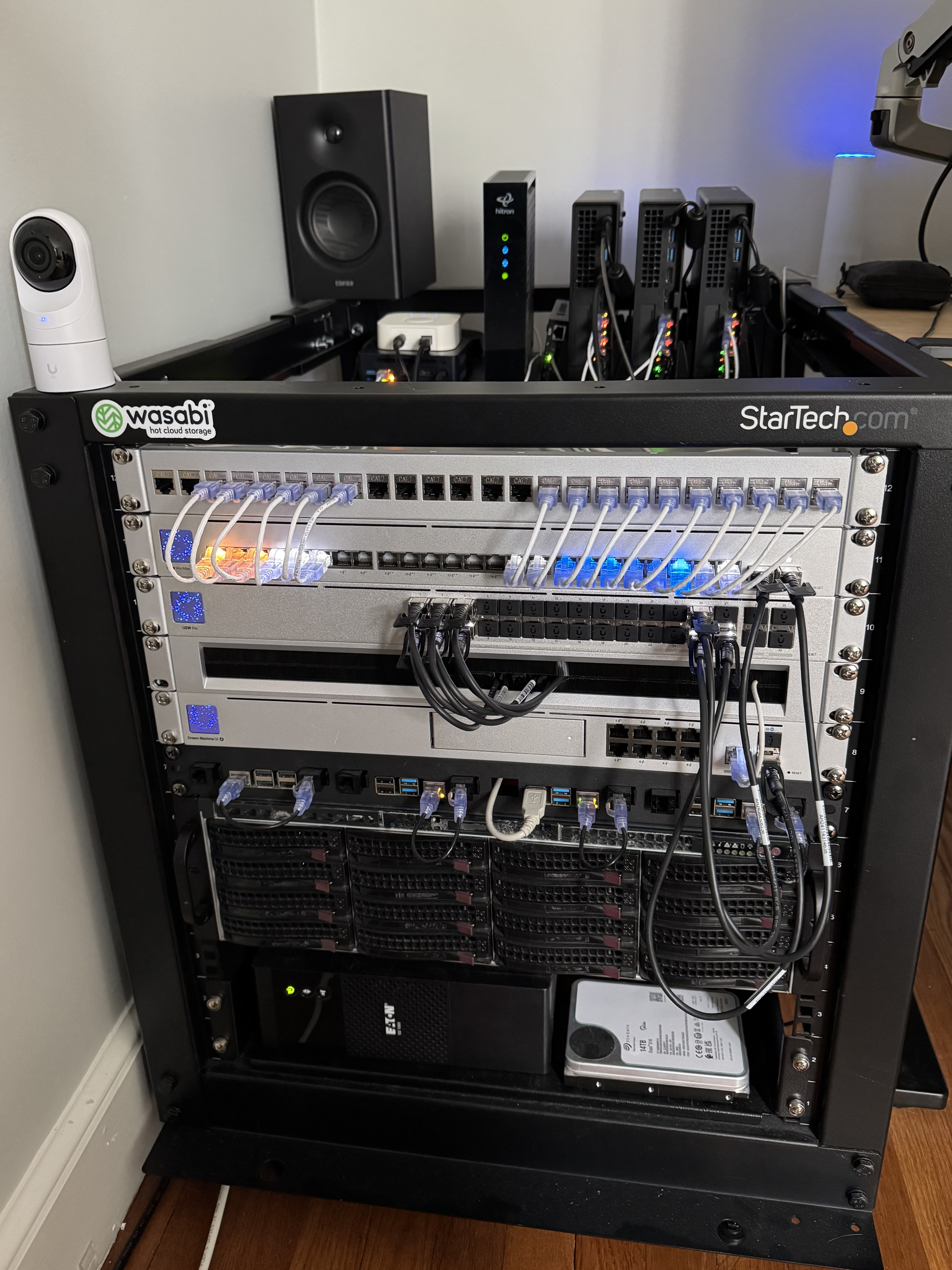About
I manage a few physical machines and self-host many services in my homelab. What started as a single raspberry pi running a few docker containers has grown to multiple servers in a highly available proxmox cluster running Ceph, VMs, and a Talos K8s cluster. I also have a pair of raspberry pis running redundant DNS and adblock services.

Proxmox Cluster
I run a 3 node Proxmox cluster on Minisforum MS01s, providing virtualization and highly-available storage for my lab. Ceph runs on the Proxmox cluster, each node has 2 OSDs which are Samsung PM983 2TB enterprise SSDs. Each MS01 is connected with dual 10G NICs LAGG’d to my Unifi Pro Aggregation switch and dual 2.5G NICs LAGG’d to my Unifi Pro Max 24 port switch. I run seperate vlans for Proxmox corosync, VM public, Ceph public and Ceph private networks.
Kubernetes Environment
On top of Proxmox, I run a Talos Kubernetes cluster managed declaratively with FluxCD.
The cluster runs several essential services:
- Cilium for pod networking and network policies
- MetalLB for load balancing, configured with BGP integration through Unifi Dream Machine Pro
- External DNS to automatically update DNS records for services
- External Secrets Operators connected to Hashicorp Vault to provide secrets
- NGINX as an ingress controller
- Ceph CSI for persistent storage, which connects to the underlying Ceph cluster
TrueNAS Build
My NAS is built in a Supermicro CSE-836 chassis. It runs TrueNAS Core with a RAIDZ2 array of 14TB disks with 72TB useable. The system has 10G networking, which connects to the same aggregation switch as the Proxmox cluster. Its the target for VM backups, from Proxmox Backup Server.
Raspberry Pi Infrastructure
I have a few Raspberry Pis handling specific tasks:
Two Pis run AdGuard Home in a redundant configuration with a virtual IP for active/standby failover. I also run homebridge and homeassistant, to connect my smarthome devices.
Network Diagram
Internet
│
▼
Unifi Dream Machine Pro Router
│
┌────────┴─────────┐
│ │
▼ ▼
Unifi Pro Aggregation Unifi Pro Max 24 Port
10G Switch Switch
│ │
├───► Proxmox Node 1 ◄─┐ ├───► Pi 1 (AdGuard + VIP)
│ │ │
├───► Proxmox Node 2 ◄─┼────┼────► Pi 2 (AdGuard Backup)
│ │ │
├───► Proxmox Node 3 ◄─┘ ├───► Workstation
│ │
└───► TrueNAS └───► Home Devices